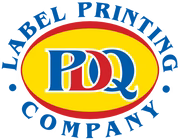
The Future of Product Labels: Quality Over Quantity?
Share
Product labels are the gateway to a customer’s first impression of your product. Whether it’s a jar of organic jam, a luxury skincare item, or a tech gadget, labels convey critical information that can influence purchase decisions. While businesses often face the dilemma of choosing between prioritizing quantity or quality on product labels, the answer lies not in a strict choice but in achieving a balance.
Quantity
Including a wealth of information on a product label can be advantageous for several reasons:
1.Transparency: Modern consumers value honesty and comprehensive details about what they are buying. Labels that list ingredients, nutritional facts, manufacturing details, and certifications build trust.
2. Compliance: Regulatory bodies often mandate certain details, such as allergens, expiration dates, and usage instructions. Failing to include these can result in penalties and loss of customer trust.
3. Marketing Opportunity: A label brimming with claims such as “organic,” “sustainably sourced,” or “gluten-free” can attract niche markets. Offering multiple selling points makes it easier to capture attention in a competitive market.
4. Customer Guidance: Detailed instructions, storage guidelines, and warnings ensure customers use the product effectively and safely.
Though, too much information can overwhelm the customer, making the label appear cluttered and detracting from the product’s aesthetic appeal.
Quality
A focus on quality emphasizes design, clarity, and selective information that aligns with brand identity. High-quality labels offer several benefits:
1. Visual Appeal: A clean, aesthetically pleasing design is more likely to catch a customer’s eye. High-resolution graphics, elegant fonts, and professional layouts exude sophistication.
2, Brand Identity: Minimalist labels with curated content often align with premium branding. They convey confidence, letting the product speak for itself.
3. Readability: Less cluttered labels improve readability, ensuring that essential information isn’t lost in a sea of text.
4. Consumer Perception: Labels that are designed with precision and high-quality materials (such as embossing or foil stamping) can make a product feel luxurious, potentially justifying a higher price point.
Though, prioritizing quality at the expense of necessary information can lead to a lack of transparency, which modern consumers may view as a red flag.
Striking the Balance
Achieving the ideal mix of quantity and quality requires a broad strategic approach:
1. Prioritize Core Information: Ensure that essential details—like product name, key benefits, legal compliance, and contact information—are always visible and easy to read.
2. Use Smart Design: Leverage modern design techniques to organize information effectively. For instance, use icons to represent features (e.g., “vegan” or “BPA-free”) or QR codes for additional details, leaving more space for visuals.
3. Segment Information: Divide content into clear sections with headings or borders to make the label user-friendly. This prevents customers from feeling overwhelmed.
4. Test and Iterate: Use focus groups to test different label designs. Gather feedback to determine what resonates with your target audience.
5, Consider Sustainability: High-quality doesn’t always mean expensive. Eco-friendly materials and minimalist designs can project a premium feel while appealing to environmentally conscious consumers.
Verdict
When it comes to product labels, it’s not a matter of quantity versus quality but rather a harmony of the two. A well-crafted label provides enough information to inform and assure customers while maintaining a design that reflects the product’s value and brand ethos. By balancing these elements, businesses can create labels that not only attract but also retain loyal customers.



